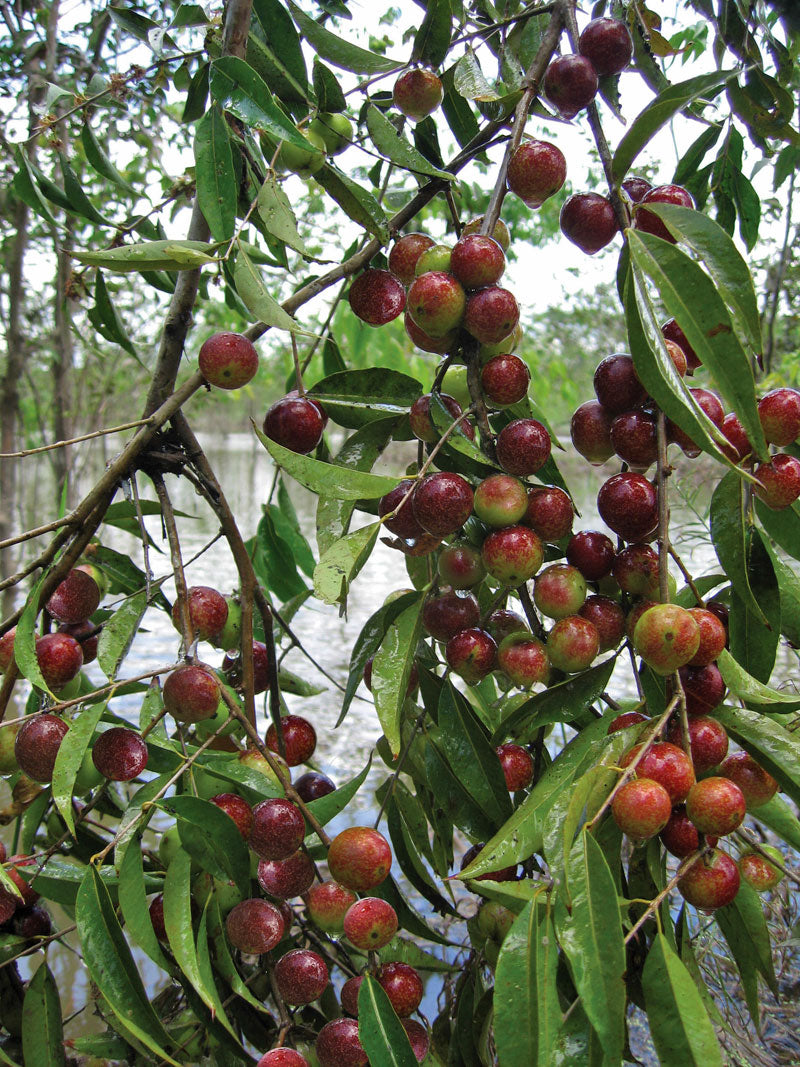HappiestPlants
Camu Camu Live Plants (Myrciaria Dubia)
Camu Camu Live Plants (Myrciaria Dubia)
Couldn't load pickup availability
Share
Camu-Camu, scientifically known as Myrciaria Dubia, is a plant species belonging to the Myrtaceae family. This small, bushy tree is typically found along riversides in the Amazon rainforest, primarily in regions of Peru and Brazil. It thrives in a relatively dry environment and is not only valued for its fruit but also for its medicinal applications.
The Camu-Camu fruit is relatively small, measuring around 2 to 3 centimeters in diameter. It features a round, oval, or ovate shape and has a smooth, taut, semi-thin skin. When young, the fruit appears green, transitioning to variegated red-green hues as it ripens and eventually turning dark red-purple or purple-black when fully mature. The flesh underneath the skin is soft, aqueous, and succulent, typically enclosing 1 to 4 brown seeds. A reddish pigment in the leathery fruit skin imparts a pink color to juices extracted from Camu-Camu, and the fruit has a subtle aroma.
Camu-Camu is highly regarded for its nutritional content, which includes fatty acids, vitamins, amino acids, and minerals. It is particularly rich in vitamin C and boasts impressive antioxidant properties. This fruit is employed in various applications, including addressing viral infections, eye conditions like cataracts, atherosclerosis (hardening of the arteries), chronic fatigue syndrome, and many other health conditions.
Recognized by common names such as Cacari and Camocamo, its botanical name remains Myrciaria Dubia. Typically, Camu-Camu plants commence blooming and bearing fruit within 2 to 4 years of growth, and they require a moderate level of maintenance to thrive and produce their nutrient-rich harvest.










